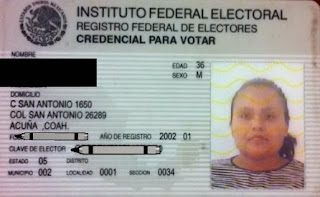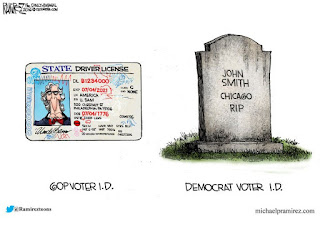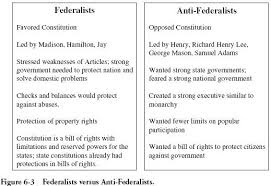The series in this set have a lot of pages. The first set has five pages plus one page with videos. The second set has nine pages, and a tenth page is more than half-finished. The third set has five pages plus an extra two pages that are related.
Every major political party is like a large group that is formed for any reason. There will always be minor disagreements among its' members. Because the Democrat Party and the Republican Party have so many members, it would be impossible for every member of either party to agree on the best presidential candidate or to agree on the best policies for its' platform.
For example, most of the presidential elections in American history included multiple candidates from the same party. In 2008, there was a heated rivalry between Hillary Clinton and Barak Obama for the Democrat nomination. On June 21, 2014, the New York Post published a story titled
.
In 2016, 1Donald Trump beat 16 other Republican candidates during primary elections and caucuses to become the Republican nominee and eventually, the President of the United States. A bitter rivalry between Senator Cruz and businessman Donald Trump evolved into a mutually beneficial friendship.
The links were on their page. The image, showing the signing of the U.S. Constitution by 39 members of the Constitutional Convention on September 17, 1787, is a painting by Howard Chandler Christy.
Founding Fathers, the most prominent statesmen of America’s Revolutionary generation, responsible for the successful war for colonial independence from Great Britain, the liberal ideas celebrated in the Declaration of Independence, and the republican form of government defined in the United States Constitution. While there are no agreed-upon criteria for inclusion, membership in this select group customarily requires conspicuous contributions at one or both of the foundings of the United States: during the American Revolution, when independence was won, or during the Constitutional Convention, when nationhood was achieved.
Although the list of members can expand and contract in response to political pressures and ideological prejudices of the moment, the following 10, presented alphabetically, represent the “gallery of greats” that has stood the test of time: John Adams, Samuel Adams, Benjamin Franklin, Alexander Hamilton, Patrick Henry, Thomas Jefferson, James Madison, John Marshall, George Mason, and George Washington. There is a nearly unanimous consensus that George Washington was the Foundingest Father of them all.
The Articles of Confederation were an early attempt to produce a document that the nation's leaders would all obey. It organized governmental functions into groups, but it failed to give the President enough power to mediate disputes between the 13 states that we had at the time.
In 1787, when they abandoned the Articles and talked about writing the U.S. Constitution, these men saw, first-hand, that their small group had two smaller groups who disagreed with each other's basic principles. One faction, called Federalists, wanted to divide the government into groups that had some oversight over the other groups. A different faction, called Anti-federalists, wanted a straightforward hierarchy of government, with one very strong leader at the top, able to give orders to all of the other government employees. This was the structure of the British Government that they had left.
The Federalist Papers
The Founding Fathers were highly educated men and usually good friends. They wrote letters to each other to exchange political ideas with each other. These letters are called the Federalist Papers because most of
them discussed the principle of a Federalist government.
The current political parties
The pages listed below are arranged by the name of the party. These pages were written in a different order. The pages about Republican factions are labeled 1a, 1b, and 1c. The pages about Democrat factions are labeled 2a through 2g. Links to all of these pages are embedded.
Republican factions
Page 1a
This page starts with a brief history of the party and then discusses the faction that represents Donald Trump's family and their supporters, some of whom are so loyal, they would forgive him if he shot someone in cold blood on the streets of New York City.
The Republican Party has other factions, some of whom are loyal to the traditional Republican respect for law and order, and the Rule of Law, which states that everyone, even people who have a lot of charisma and supporters, need to obey the laws passed by state governments and the U.S. Government.
Some of his supporters are still so loyal to him today, they will forgive him for anything, even cold-blooded murder.
Page 1a also includes some information about another Republican family that has more conservative values. This is the Koch family, which was headed by two brothers, although one of them
died in August 2019.
In August 2017, I attended the last of 11 one-day events that were organized by one of the Koch brother's lobbying organizations, called Americans for Prosperity.
This event was held in Richmond, Virginia. The speakers included Steve Forbes, the GOP candidate for Governor of Virginia, a U.S. Representative in Virginia, and one of the five F.C.C. Commissioners.
I recorded videos of all of them and this video. |
|
Page 1a also has information about another conservative faction within the Republican Party, the Tea Party. It is a movement, not a political party that is registered with
the U.S. Federal Elections Commission.

Conservative principles were mentioned in a 2009 CNBC video on the page and explained in more detail in a 2010 video of a speech given by
Michelle Bachmann, who was a member of the U.S. House of Representatives at the time. Both videos are on the page.
Page 1a continues with a long discussion of "Republicans who have been in office for along time", a group that is sometimes called "the Republican Establishment", then a discussion of the Mormon Church, a group that has many politically-conservative members, and then a discussion of Republicans like
Booker T. Washington and
the Reverend Dr. Martin Luther King, Jr., who were advocates of civil rights within the party.

Page 1a continues with a discussion of a well-known Republican Governor, pictured on the right, who threatened to leave the party because his political views were more moderate than he saw within the party. This section also names a well-known conservative Republican commentator who
did leave the party. Other people I know on Twitter describe themselves as having left the party. This section names a wealthy man who also left the Republican Party.
This page ends with my commentary about the corruption of the former Chairman of the Republican Party, Reince Priebus, by presidential candidate Donald Trump.
Page 1b
This page begins with a look at the most effective Republican lobbying groups. It continues with the 2018 dispute between President Trump and the Chamber of Commerce over tariffs. The Chamber is a traditional Republican group because they represent business owners.
This page then mentions a small faction called the Log Cabin Republicans, a 2018 spending bill in the House of Representatives, a dispute between the Club for Growth and a Republican member of the Senate. who was a big fan of President Trump. The Club tried to have another Republican challenge the sitting Senator.
This page then mentions the fact that President Trump campaigned for the reelection of Senator Ted Cruz. His efforts were successful. The Senator was reelected in November 2018.
Page 1c
This page has more information about the Log Cabin Republicans and another group of gay Republicans. The page also examines the complex relationship between gays and a pedophile group called
the North American Man-Boy Love Association.
This page includes a tweet from James Woods, who used to be a Democrat, and it finishes with a large section about a Democrat who used to be a Governor. Because of his strong patriotism and his moderate political views on foreign policy and other issues, I recommended to the Democrat Party in 2014 that they make him a presidential candidate.
Democrat factions
Page 2a
 This page
This page begins with a clickable outline of all of the pages in this series, including the three pages about Republican factions. I then give a short description of the history of the Democrat Party, and I name some patriotic Democrats because they are one small but important faction in this party.
The image on the left was sewn into the inside of clothing during the 1930s, when the U.S. President was Franklin Roosevelt, a Democrat, and when there was high unemployment in America. There is a large section about him.
A large section on Page 2a also names F.D.R.'s successor, Harry Truman, as a patriotic Democrat. Another large section is about President John F. Kennedy, another patriotic Democrat because he defended America against Russian military aggression in Cuba in 1962. There is also a small section about President James Earl "Jimmy" Carter, who was an officer in the U.S. Navy, and a quote from a February 2019 article about former Vice-President Joe Biden, who was quoted as saying that he wanted a strong relationship between America and "her traditional allies".

The page includes a tweet from a patriotic American who has millions of followers on Twitter, and then it ends with a large section about a former Governor pictured on the right, who is very patriotic and who has moderate views about foreign policy and other issues. He even has an N.R.A. membership.
Because of these factors,
I wrote a page in 2014 that asked the Democrat Party to nominate him for President.
Page 2b
This page begins with evidence that the Democrat Party has many factions. One piece of evidence is a late November 2018 Op-Ed in the Sacramento Bee that includes this sentence. "And these intraparty rivalries are often quite nasty." The page includes a large section about the rivalry between the Clinton family and the Obama family, as described by this best-selling book.
There is a small section that says that these two families settled their differences after the 2016 election by uniting to attack Donald Trump, who they correctly believed would be the presidential nominee of the Republican Party.
This page has a large section about Classic Liberals, a group that is defined by their willingness to be open-minded to new ideas. For contrast, the page documents how some people have attacked the supporters of Donald Trump by grabbing MAGA hats from their heads, sometimes without any resistance, which shows the violently intolerant nature of these people.

The page continues with a large section about Democrats who have moderate economic views. Some of them are part of a well-organized group called the Blue Dog Democrats. This section has a sub-section about 2013 legislation called Wall Street Reform. It was co-sponsored by a moderate Republican Senator named
Chris Dodd and a moderate Democrat U.S. Representative named
Barney Frank.
This page ends with a large section about the efforts of a new Republican President and the Republican Congress to reform the Wall Street Reform law.
A March 2018 Bloomberg story about this effort has a section headline titled "Divided Democrats".
Page 2c
This page has more information about the Blue Dog Democrats, who have moderate economic views. There is a large section about Democrats who are forced by reelection pressure to soften their views because a lot of their voters are Republicans. There is also a small section about the first Thanksgiving, because good harvests of food depended on a capitalist economy.

This page has a large section about individual Democrats who have had public disagreements with the policies of their party. Each of these people has a small section. They include
Zell Miller. seen on the left,
Roseanne Barr, and there is a very long section about President Bill Clinton, who reformed welfare and deregulated America's banks.
Page 2d
This page is about Democrats who don't like Capitalism because they prefer Socialism or Communism. Capitalism and Socialism are compared early in the page, and then there is a section about Democratic Socialists, who secretly admire Karl Marx

There is a large section about the U.N. because their Agenda 21 is unmistakably anti-capitalist. This program states that people have a right to eat, which turns farmers and other food producers into slaves who must keep working, regardless of the economic conditions that they live with.
There is a section about a Socialist website that is misnamed because many of their issues and many of the headlines on their printed newspaper are political, not economic. An accurate description of them is that they are a Marxist organization.
This page has a large section about a freshman House member called Alexandria Ocasio-Cortez, a section about an organization called World Hunger, which like the U.N.'s Agenda 21, insists that people have a right to eat.
The page also names, as an anti-capitalist organization, a college in
California that invited members of the Venezuelan Government to speak
about their economic initiatives. This subsection includes two tweets
from U.S .Senator Marco Rubio, who criticized this college for their
invitation.
The page also names other Democrats, including Hillary Clinton, Barak Obama, and Bernie Sanders, who have been advocates for Socialism. Thee is a short section about college students who were interviewed on-camera. A YouTube video shows their satisfaction with Socialism and then their inability to define the word.
This page shows how some poor people have gained wealth. There is a short section about the current Chinese dictator and another small section about the empty promises of Socialism.
Page 2e
This page is about Democrats who don't like democracy because they prefer street violence that is led by unelected radicals. The page begins with a dictionary definition of the word "democracy", which emphasizes leadership by the people "Demos" in Greek. When radicals plan a protest demonstration or a march, there is no input by any large group of voters on their plan, so there is no democracy, which was first developed in Ancient Greece.
The page mentions an alternative to a democracy, in the form of a dictatorship, including the explicit "dictatorship of the proletariat", which was stated by Karl Marx. There is a section about U.S .Senator Elizabeth Warren, who
publicly stated her support for a street demonstration called Occupy Wall Street.
Page 2f
This page names some organizations, usually supportive of the Democrat Party, that don't approve of the basic principles of a democracy, which are named in the previous page.
The city council in one California city allowed each of their members to choose members of various commissions, thus violating the right of the people to vote for people to serve on those commissions.
Some colleges have refused to provide adequate protection when a conservative student group invites a conservative to speak to their group. Planned protests have resulted in the President of that college cancelling the appearances of those speakers.
Students have assaulted other students without any consequences. This is documented by videos of the violence.
Free speech was enforced by actions taken by the U.S. President a U.S. Senator, a U.S. Governor, and the U.S. Justice Department.
There are sections about these organizations.
- the American Civil Liberties Union, which often ignores the civil liberties of political conservatives,
- the Democratic Socialists of America,
- Antifa, a group of vigilantes,
- the Sunrise Movement, a new group on the political left, and
- two students of a high school in Florida who became anti-gun activists when someone murdered some of their fellow students
This page ends with a discussion of the future of the Democrat Party.
Page 2g
This page begins with news stories that show how two radical Democrats, Bernie Sanders and Alexandria Ocasio-Cortez, lost some of the popularity that they had in 2016. The page continues with more information about the Blue Dog Democrats, who have moderate views on economic issues. Finally, a well-known gay man asks all of the factions in the Democrat Party to stop fighting with each other. This plea is similar to one made by Rodney King, whose 1991 arrest led to riots in Los Angeles, mostly because his arrest was videotaped.
Future pages in this series
An unfinished page will show that at least three of America's minor parties also have factions. These parties are the Green Party, the Socialist Party, and the Communist Party. When I publish this page, it will be labeled Page 3.























